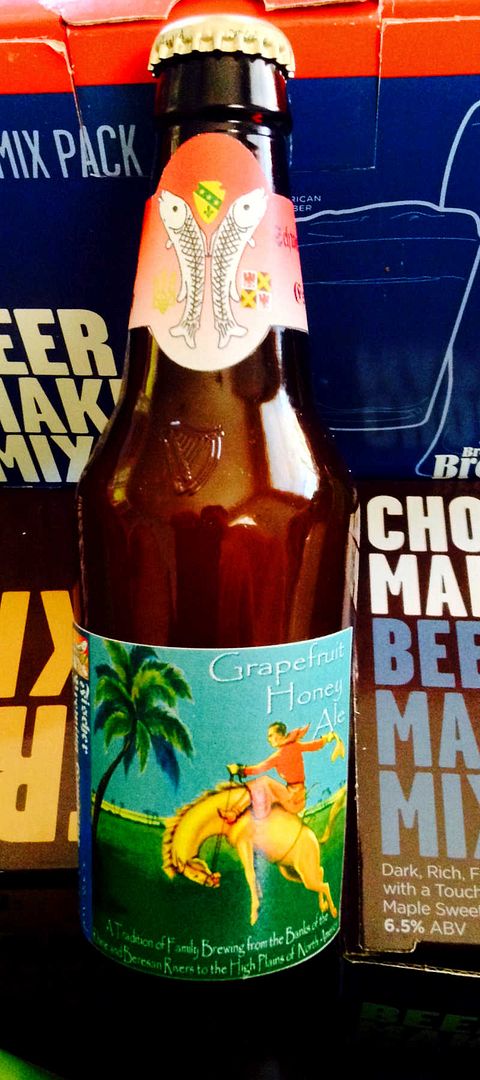TasunkaWitko
Well-Known Member
Hello -
I'm set to begin my first ever brew of any beer - hopefully this weekend - it will be the Grapefruit Honey Ale mix from Brooklyn Brew Shop:
[ame]http://vimeo.com/36299962[/ame]
http://brooklynbrewshop.com/beer-making-kits/grapefruit-honey-ale
My purpose with starting this thread is to ask anyone who has made this recipe to post any tips or advice specific to this recipe. As I understand it, the Grapefruit Honey Ale is also in BBS's recipe book, so any experiences from those who have used that source would be appreciated as well.
I am sure that I'll have more questions, but I'll open with this:
Reading the directions, It says to add the peel from a grapefruit; the thing is, we all know that the white part underneath is quite bitter, and I'd like to keep the bitterness down as much as possible. With that, has anyone tried adding the zest only? How did that work, compared to using the whole peel?
On a related note, it seems from reading here that the recipe book says to toast the peel in the oven, but this direction is not on the instructions with this kit. Many ingredients benefit from a little toasting, and with the sugars etc. in grapefruit zest, I am guessing that such would be the case here. Has anyone tried this both ways as well? What were the results?
Normally, I would hesitate to stray from the instructions or recipe the first time I embarked on a project, but in this case, it seems that those two variations might help me to get the beer that I am looking for. My goal is to squeeze as much grapefruit flavour as possible with as little bitterness as possible. If zesting and toasting will achieve that, then I'll give it a shot.
I'm set to begin my first ever brew of any beer - hopefully this weekend - it will be the Grapefruit Honey Ale mix from Brooklyn Brew Shop:
[ame]http://vimeo.com/36299962[/ame]
http://brooklynbrewshop.com/beer-making-kits/grapefruit-honey-ale
My purpose with starting this thread is to ask anyone who has made this recipe to post any tips or advice specific to this recipe. As I understand it, the Grapefruit Honey Ale is also in BBS's recipe book, so any experiences from those who have used that source would be appreciated as well.
I am sure that I'll have more questions, but I'll open with this:
Reading the directions, It says to add the peel from a grapefruit; the thing is, we all know that the white part underneath is quite bitter, and I'd like to keep the bitterness down as much as possible. With that, has anyone tried adding the zest only? How did that work, compared to using the whole peel?
On a related note, it seems from reading here that the recipe book says to toast the peel in the oven, but this direction is not on the instructions with this kit. Many ingredients benefit from a little toasting, and with the sugars etc. in grapefruit zest, I am guessing that such would be the case here. Has anyone tried this both ways as well? What were the results?
Normally, I would hesitate to stray from the instructions or recipe the first time I embarked on a project, but in this case, it seems that those two variations might help me to get the beer that I am looking for. My goal is to squeeze as much grapefruit flavour as possible with as little bitterness as possible. If zesting and toasting will achieve that, then I'll give it a shot.




